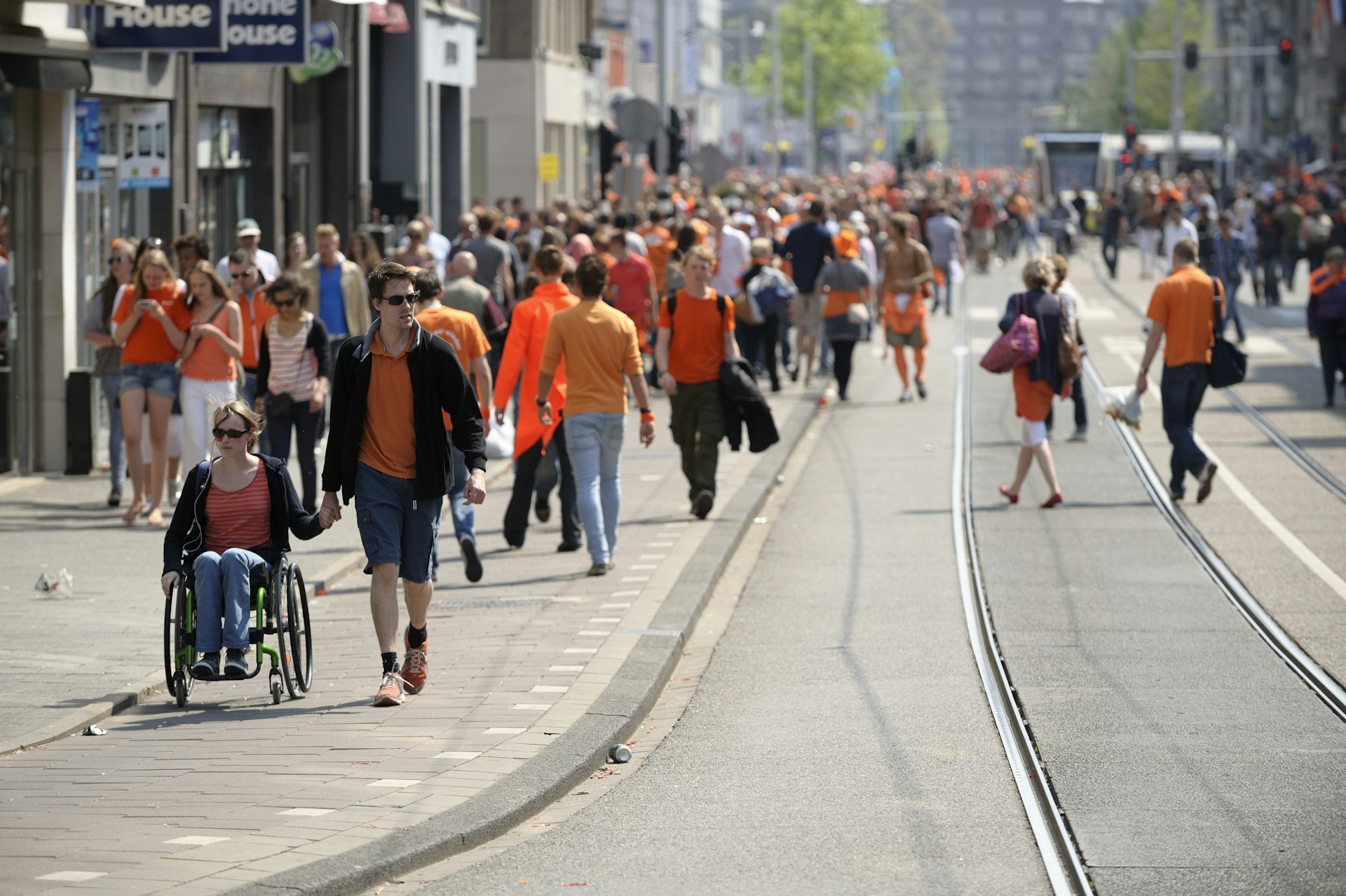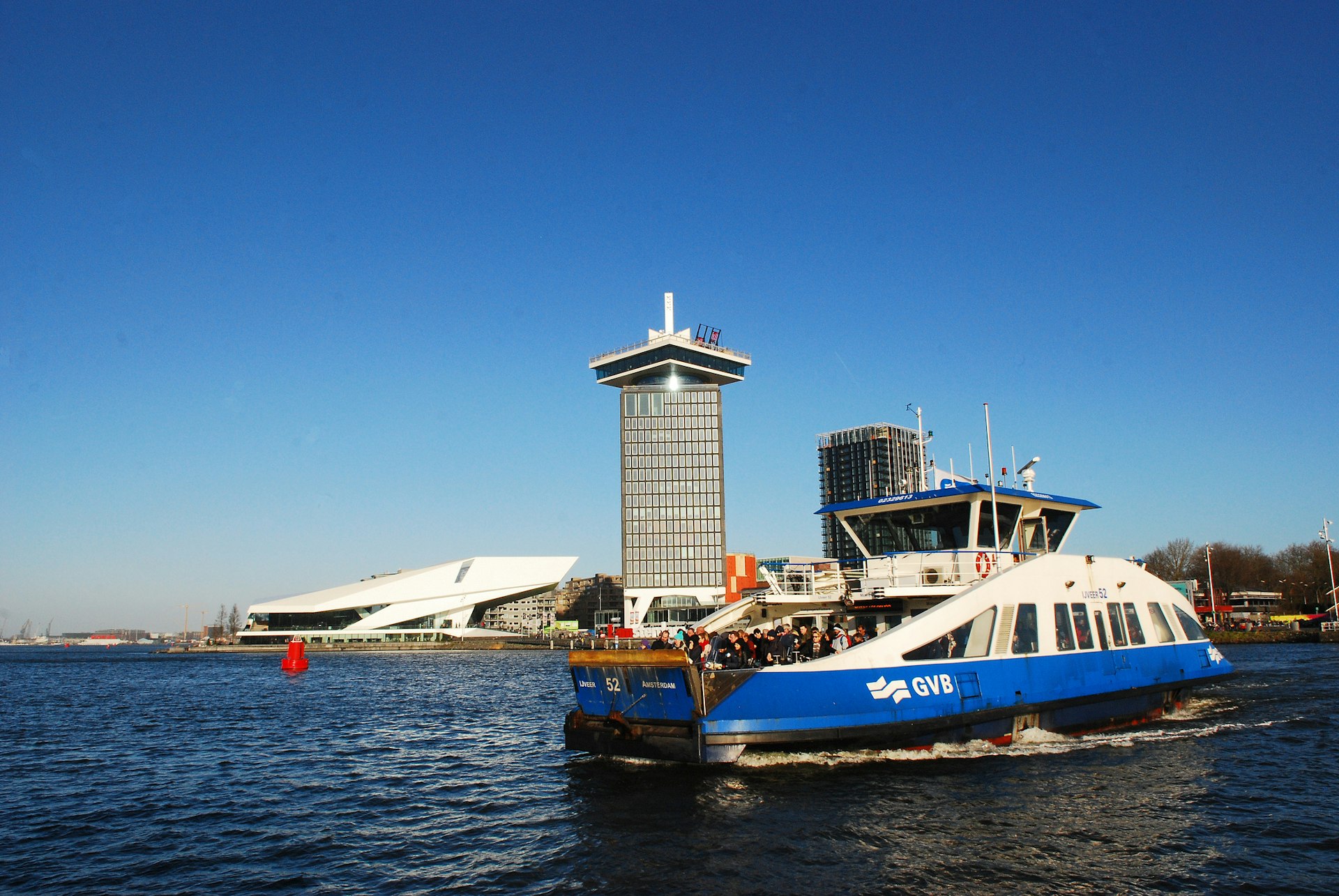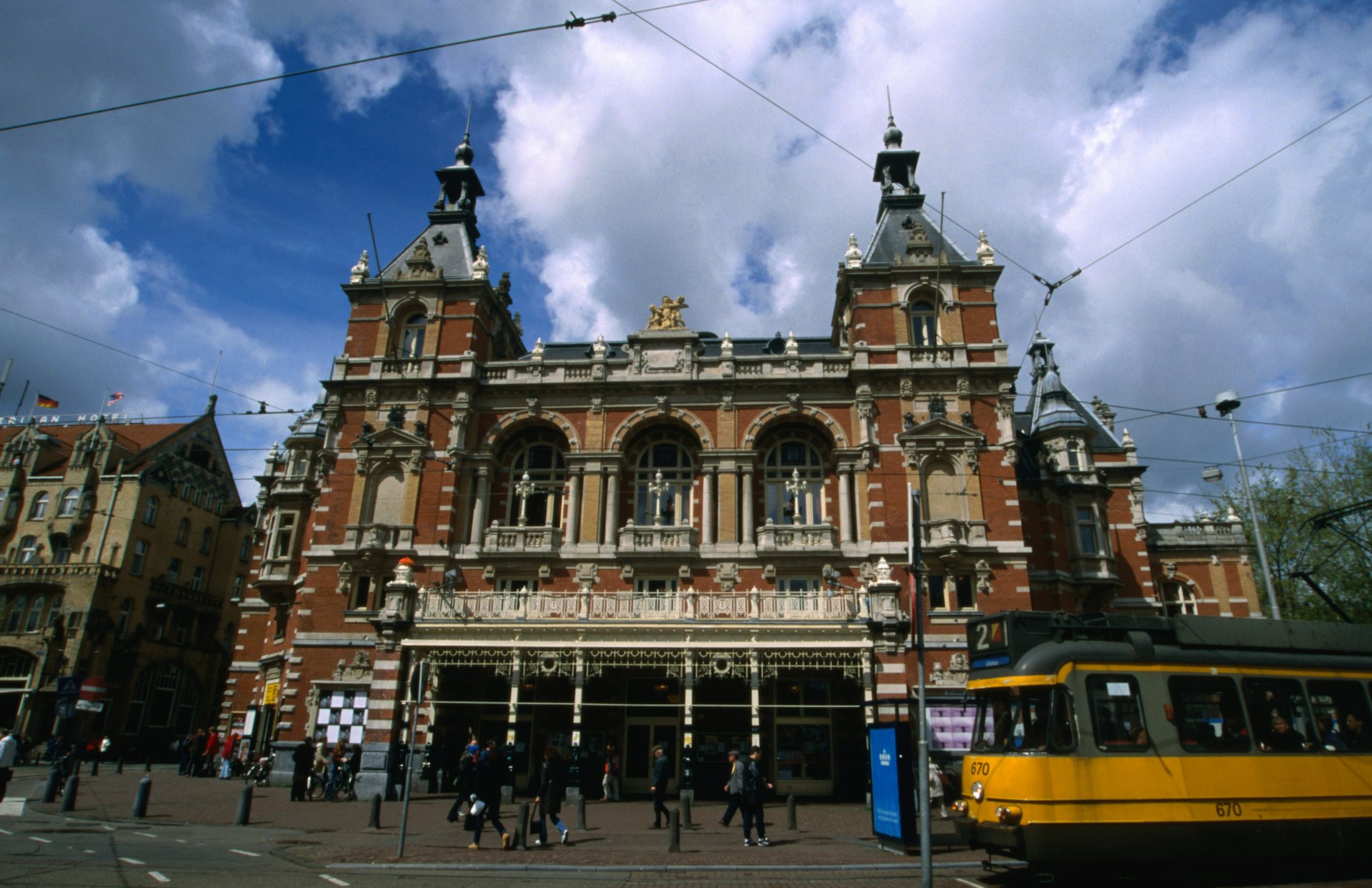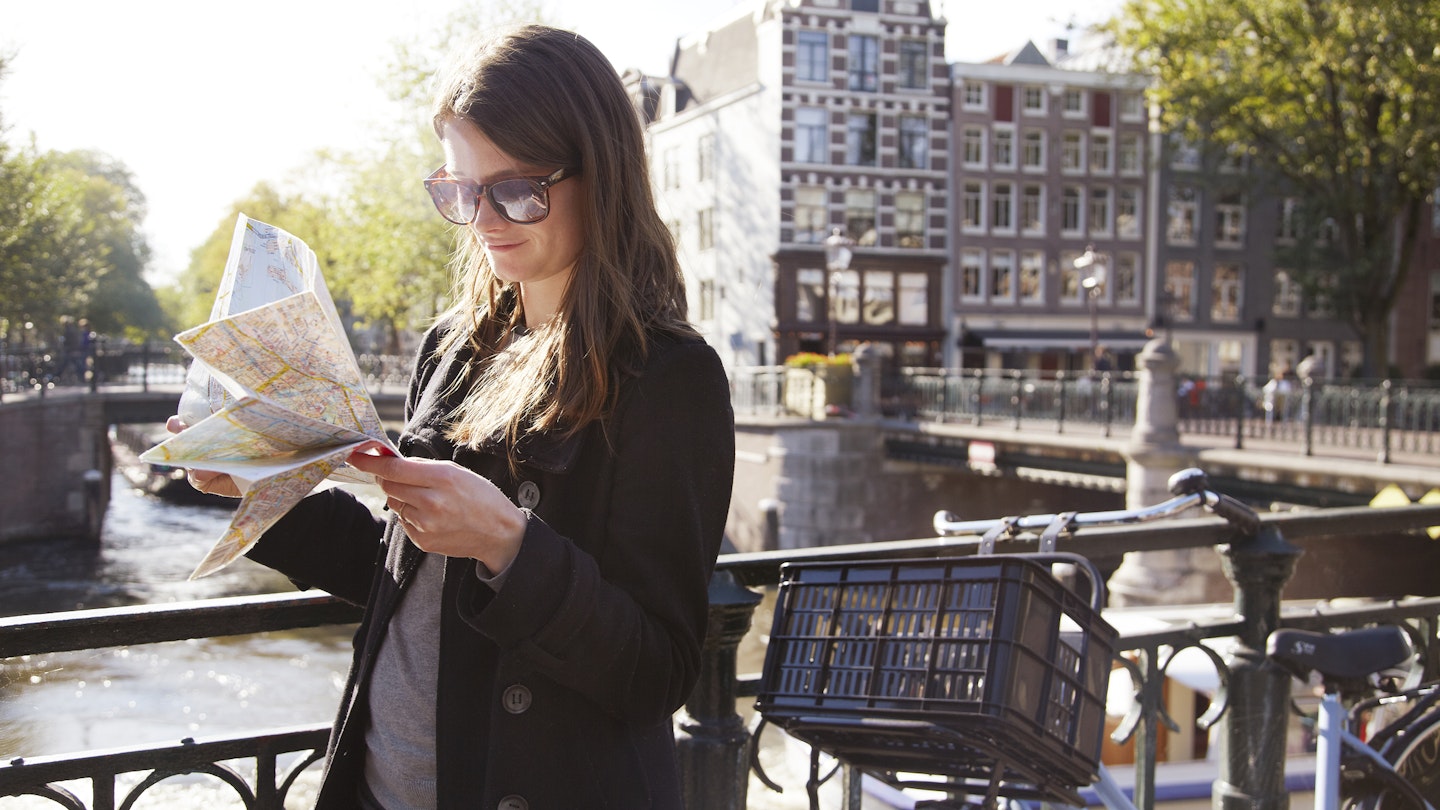Comfy footwear and a good sense of direction will get you far in Amsterdam – it’s one of the easiest European cities to get around.
The Dutch capital’s center is very walkable as it’s so compact – perhaps a little too much as it tends to get very crowded. Luckily, public transport connecting central Amsterdam to more spacious outer districts is extensive, dependable and well-priced.
Free ferry rides also offer some perspective into the everyday lives of Amsterdam commuters, plus a peek into the trendy emerging Noord neighborhood.
Of course, no trip to the Venice of the North is complete without a fietsen (bicycle) ride. Bicycles are more common than cars here and are truly a convenient and sustainable means of transport.
From bus to boat, these are our best tips for getting around Amsterdam.
Getting into the city from Schiphol Airport
You have three options if you’re not hiring a car from the airport: train, bus or taxi. Trains are a very good option, running to multiple stations, including Amsterdam’s Centraal Station, 24 hours a day.
This is the cheapest option for getting into the city, though it is not included on an I Amsterdam card (more on that below) and requires an additional ticket. This can be purchased at the airport, as well as bus tickets and the OV-chip card, which you can add more money to as you go.
City and regional bus stops can be found outside Schiphol Plaza to take you into the city. The Amsterdam Airport Express Bus costs a couple more euros, but it is the quickest way to places near Museumplein and Leidseplein. It runs just outside the arrivals hall door along with a shuttle van that goes to hotels (a more expensive yet convenient option).
After midnight, when trains from Schiphol Airport to Centraal Station run hourly rather than every 10-15 minutes, a taxi could be your best option. It takes 30 to 45 minutes to the city center and costs around €45, although you might save a bit with a ride-hailing service.

The right travel card can save you money
Amsterdam's public transport network runs on the city's transport provider, GVB and downloading their public transport app will come in handy.
Purchasing single-use one-hour tickets is cumbersome and requires unnecessary waiting in line. Buying a disposable OV-chipkaart from stations and establishments like supermarkets is recommended.
The GVB’s multiday ticket offers or the I Amsterdam City Card (combining some entertainment with unlimited public transport) are highly recommended. Both can be purchased online before you arrive.
The GVB’s multiday tickets come in durations from one to seven days. The I Amsterdam card is available for durations from one to five days and includes admission to attractions such as the Rijksmuseum (plus time slot bookings), a canal cruise, bike rental and discounts at certain venues.
Tip for buying tickets: Most GVB tickets purchased online are mailed by post, so it’s best to place your order at least four to six weeks before travel. The I Amsterdam cards are picked up from the I Amsterdam shop at Centraal Station, so be sure to bring proof of purchase.
Tip for using travel cards: Do not forget to check in with your card. (Some trams have ticket barriers, but otherwise, look for the yellow chip readers and hold your card to it.) Your card will be valid from the beginning of your first journey.
If you are caught with an unactivated ticket or card, you will face a fine. Checking out is especially important with an OV chipkaart. Otherwise, you risk paying more.

Central Amsterdam is best explored on foot
Walking around the city center offers you the chance to stumble upon cobblestone lanes, alleyway shops and clandestine restaurants you might’ve otherwise missed.
Navigating around the central grachtengordel (canal ring) is easy when you remember that the major canals all run in a loop in the shape of a horseshoe in alphabetical order. (The sole exception is the Singel Canal, once a fortification line, which forms the innermost ring.)
House numbers on canal streets run from low to the west and high to the east. Learning the rough locations of the main downtown squares Dam (in front of the Centraal Station), Leidseplein and Rembrandtplein will keep you on track.
Take advantage of Amsterdam's cycle lanes
Cycling is the Netherlands’ most beloved mode of transport. In Amsterdam, it’s a relaxing and sustainable way to access parks and open spaces in less-touristy neighborhoods and take in the bountiful scenery.
You’ll find bike rental shops everywhere. A day’s rental usually costs about €10. Choosing a rental company without branding will help you blend in. Take care to ride your bike in the red asphalt-covered bike lanes, not on the footpaths for pedestrians.
Tip for cycling: Bike thieves in Amsterdam know how to get creative. Consider purchasing theft insurance starting at about €3 per day. Alternatively, bike-renting apps like Donkey Republic are good for short distances with pay-per-minute plans.

Escape the crowds on a ferry
Free ferries that depart from behind Centraal Station and cross the IJ River are a great way to escape the crowds and explore up-and-coming areas like Amsterdam Noord and NDSM-Werf. During high-commute times, you’ll see locals breathing in the fresh air, trusty bicycles and mopeds in tow.
The main ferry connection to Buiksloterweg (and most popular for sightseeing in Noord) runs several times per hour, 24 hours a day.
Driving is not ideal
Driving in central Amsterdam is not recommended for a few reasons – narrow streets, abundant bicycle lanes, and scant parking (which is also astronomically expensive). Amsterdam accommodations rarely offer parking.
That being said, if you do decide to drive, all streets in the downtown canal ring are one-way, and you always drive on the right. When approaching intersections, some canal bridges might not have traffic signs – treat them as a four-way stop. (The first vehicle to arrive has the right of way; if two vehicles arrive simultaneously, the vehicle furthest to the right goes first; turning right has priority over turning left.)
Use taxis late at night
Taxis tend to be expensive slowpokes, given Amsterdam’s maze of streets. Locals rarely use them since they are usually only available at stands and in busy areas. Many, especially those in the city’s booming tech scene, prefer to call a ride-hailing service like Uber or Lyft instead.
Taxis come in handy once the regular public transport stops between midnight and 6am. Buses take over during the wee hours to serve the main central areas and the suburbs but be forewarned – they take ages to get around.

Get to know the tram map
Most public transport within the city is by tram, and after long days of roaming around, you'll likely get to know the tram map well. Tickets are typically sold on board, either from a machine or a seller in a booth.
Tip for tram tickets: The purchase of tickets on trams is cashless; make sure to have a credit or debit card.
Accessible travel
Travelers with reduced mobility will find Amsterdam moderately equipped to meet their needs. A large number of budget and midrange hotels, especially in central Amsterdam’s older buildings, will be of limited accessibility due to steep and narrow stairwells.
Most museums and attractions have elevators or ramps and accessible toilets, with a noticeable exception being the Anne Frank Huis. Most restaurants are on the ground floor (although they may still have a few steps to get inside). Before visiting somewhere, it’s usually good practice to ask for a few details about the entrance and outdoor cobblestone.
Most canal cruises, buses and metro stations are wheelchair accessible. Some trams have raised platforms; the rest should be avoided. Check the GVB website for a complete list of wheelchair-friendly stops.
Accessible Travel Netherlands and the Able Amsterdam blog are excellent resources for further information.











